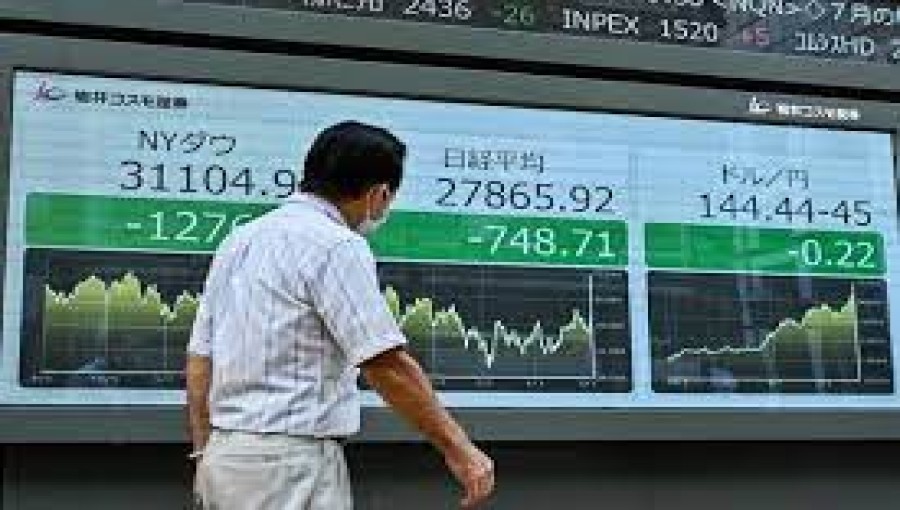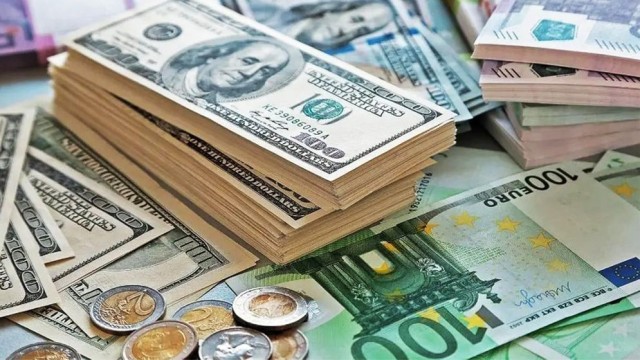Asian markets experienced significant declines on Monday as mounting fears of a potential U.S. recession led investors to abandon risk assets and speculate on rapid rate cuts to stimulate growth. Safe-haven currencies like the yen and Swiss franc surged as crowded carry trades unwound, triggering circuit breakers in some Asian exchanges.
Market Reactions:
- Nasdaq futures: Down 2.9%
- S&P 500 futures: Fell 1.6%
- EUROSTOXX 50 futures: Declined 0.8%
- FTSE futures: Dropped 0.5%
Japan's Nikkei index saw a dramatic 8.0% drop, reaching seven-month lows and marking its largest three-day loss since the 2011 financial crisis. The MSCI's broadest index of Asia-Pacific shares outside Japan lost 2.8%, while Chinese blue chips managed a 0.2% gain, buoyed by a rise in the Caixin services PMI to 52.1.
Japanese 10-year bond yields fell sharply by 17 basis points to 0.785%, the lowest since April, as markets reconsidered the likelihood of another rate hike by the Bank of Japan. Treasury bonds were in high demand, with 10-year yields dropping to 3.723%, the lowest since mid-2023, and two-year yields falling to 3.818%. The two-year yields could soon drop below the 10-year yields, creating a curve inversion often seen as a precursor to recessions.
A weak July payrolls report led markets to price in a nearly 70% chance that the Federal Reserve will cut rates by 50 basis points in September. Futures imply a total of 115 basis points of cuts in the 5.25-5.5% funds rate this year, with rates expected to be around 3.0% by the end of 2025.
Goldman Sachs analysts have increased their 12-month recession odds by 10 percentage points to 25%, although they believe the risk is mitigated by the Fed's capacity to ease policy. Goldman anticipates quarter-point cuts in September, November, and December, unless job growth fails to recover in August, which could then prompt a 50 basis point cut in September.
JPMorgan analysts are more pessimistic, assigning a 50% probability to a U.S. recession. They foresee a 50 basis point cut in both September and November, with a possible inter-meeting easing if economic data deteriorate further.
Safe Havens Sought:
Investors are awaiting the ISM non-manufacturing survey's employment data, expected to rebound to 51.0 after June's unexpected drop to 48.8. This week's earnings reports from Caterpillar and Walt Disney, as well as healthcare companies like Eli Lilly, will provide further insights into consumer and manufacturing health.
The sharp decline in Treasury yields overshadowed the U.S. dollar's typical safe-haven appeal, causing the currency to drop about 1% on Friday. On Monday, the dollar fell another 2.2% against the yen to 143.10, while the euro remained steady at $1.0934. The Swiss franc also benefited, with the dollar dropping 1.0% to six-month lows at 0.8495 francs.
Jonas Goltermann, deputy chief markets economist at Capital Economics, noted that the shift in expected interest rate differentials against the U.S. has outweighed the deterioration in risk sentiment. If recession fears intensify, the dollar could rebound as safe-haven demand increases.
Investors have also bet that other major central banks will follow the Fed's lead in easing rates, with the European Central Bank expected to cut by 67 basis points by Christmas.
Commodity Markets:
Gold gained as a safety asset, rising to $2,456 an ounce. Oil prices edged up amid concerns about a widening conflict in the Middle East, despite last week's demand worries pushing prices to eight-month lows. Brent crude rose 18 cents to $76.99 a barrel, while U.S. crude increased by 11 cents to $73.63 per barrel.































Comment: